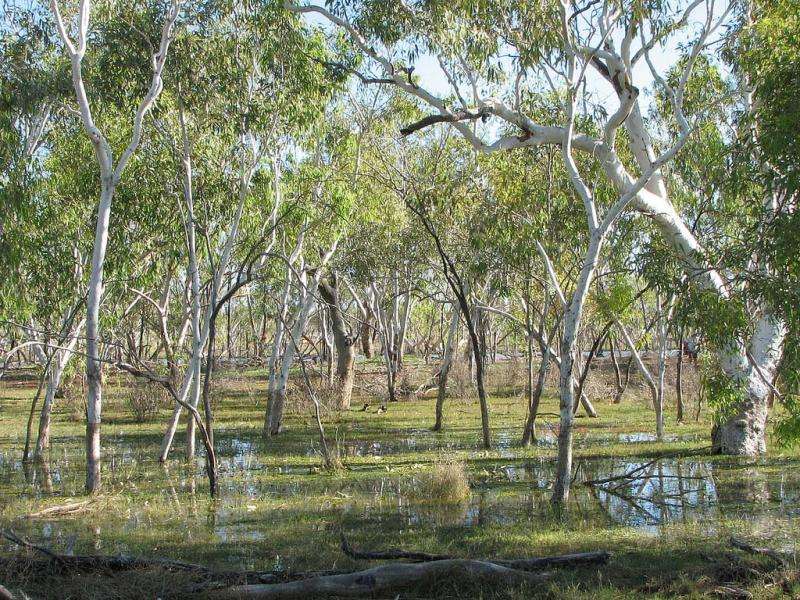Ancient campfires show early population numbers

Radio carbon data from prehistoric occupation sites are providing insights into Australia's fluctuating human population levels tens of thousands of years ago.
ANU archaeologist Alan Williams used radio carbon dating technology to examine charcoal dates from more than 1000 prehistoric campfires and based on this he says populations appear to have increased steadily until 25,000 years ago.
He did this by examining the isotope Carbon 14 (14C), which is absorbed by all living things from the atmosphere.
Their remains then lose the isotope at a steady rate after they die, and Carbon 14 levels provide reliable dates for any organic matter up to about 35,000 years old.
Dr Williams compared these dates with climatic change profiles provided by a recent synthesis of Australia's palaeoclimate from the OZ-INTIMATE (Australasian INTegration of Ice core, Marine and TErrestial records) project.
Co-author UWA archaeologist Winthrop Professor Peter Veth says Dr Williams' comparison showed a clear correlation between datasets.
"Demographic models suggest populations may have been quite high before the last ice age," W/Prof Veth says.
After this initial increase, he says, population levels remained steady or even declined from 25,000 years ago, during the more arid Last Glacial Maximum (25,000 to 13,000 years ago) when temperatures were about ten degrees cooler.
This included archaeological "silences"—or lack of occupation data—within Australia's arid zone during the Last Glacial Maximum.
"There are really only smaller bioregions in the arid zone where their occupation ceases to be registered," W/Prof Veth says.
"Then with the restructure in population and possibly lower carrying capacity for large portions of the continent that became more arid, population levels of demography may have actually become more negative."
Northern wet season drew more early human residents
Campfire numbers began to grow again 13,000 years ago when the northern wet season re-emerged.
In the west Pilbara's Chichester Range, for example, radiocarbon dating shows people started to use rock shelters that had been unoccupied since the late Pleistocene (up to 11,700 years ago).
Prof Veth says while population levels, occupation patterns and overall climate trends correlated strongly from 35,000 until about 5,000 years ago, things then became less predictable.
He says Aboriginal people had started to embrace technologies and cultural practices that appear to have made their behaviour less dependent on easily available resources.
For example, they spent more time wet-milling grass and acacia seeds to prepare damper and seed cakes which allowed people to remain more sedentary as opposed to having to travel to hunt for food.
More information: "A continental narrative: Human settlement patterns and Australian climate change over the last 35,000 years." Quaternary Science Reviews, 07/2015; 123(2015):91-112. DOI: 10.1016/j.quascirev.2015.06.018
Journal information: Quaternary Science Reviews
Provided by Science Network WA
This article first appeared on ScienceNetwork Western Australia a science news website based at Scitech.





















